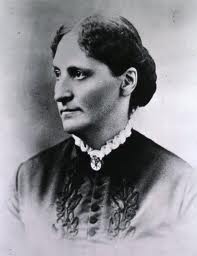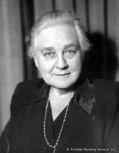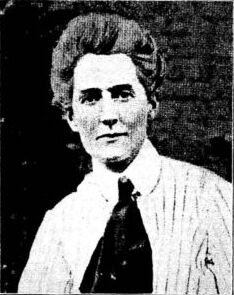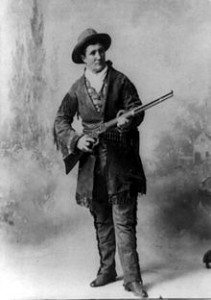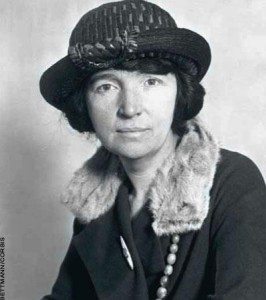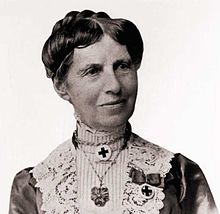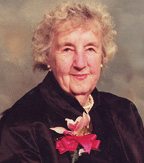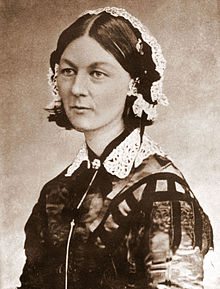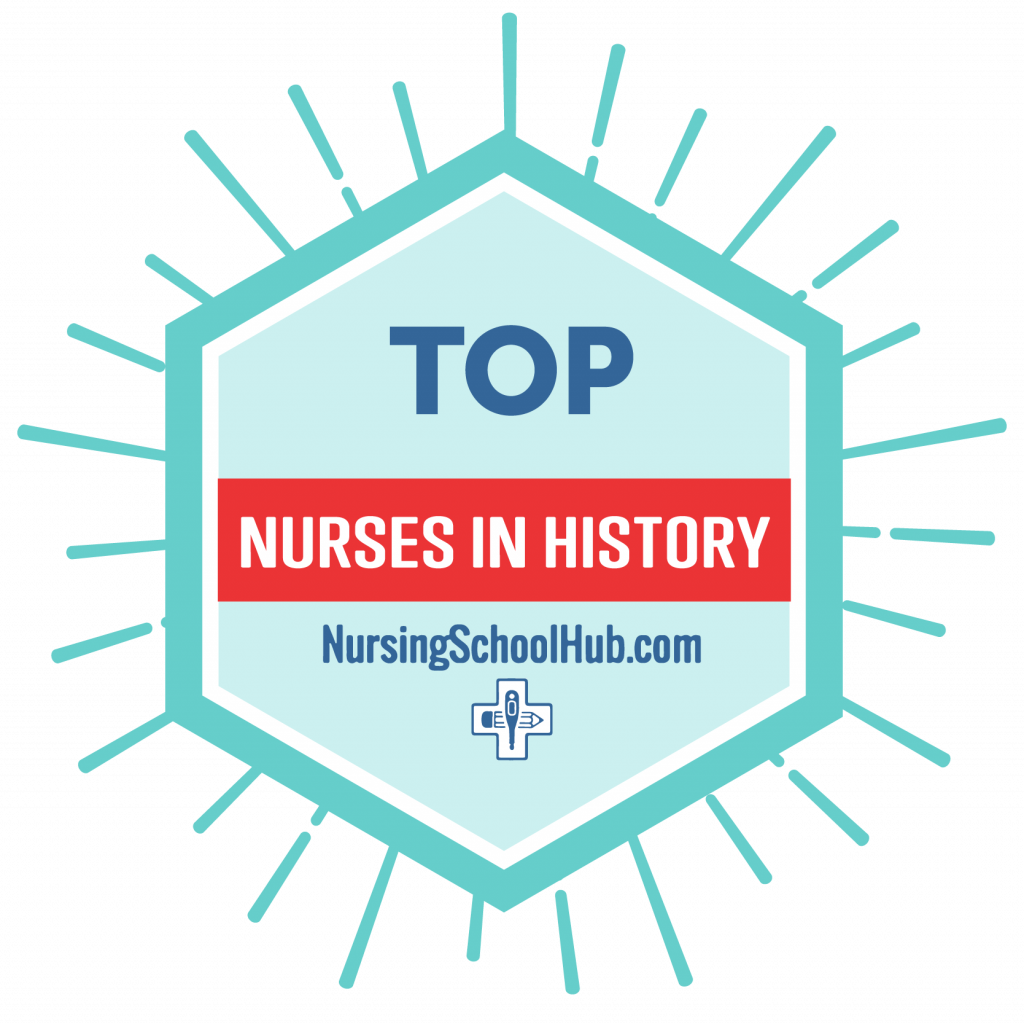
The top nurses in history made amazing contributions to medicine and are also some of the most famous nurses in history. Scientists, inventors, doctors, engineers, athletes — we can all think of famous examples of each of these professions.
The simple truth is that people excel in every field, but some fields bestow more fame than others. Nurses are part of one field that remains out of the spotlight, despite many fine nurses who have made amazing contributions to medicine. Here are ten of the most fame-worthy nurses in history.
10:Linda Richards
Featured Programs
July 27, 1841 – April 16, 1930
Linda Richards was not a woman who excelled in medical treatment. While she was the first student to enroll at the American Nurse’s School, she was not a gifted caregiver. She made no headway in pushing for healthcare reform or medical cleanliness. She was not a medic on the front lines of a battlefield, nor did she help treat those on the frontier. Richards reformed the medical system in an entirely new way, and her accomplishments live on today.
She realized that the current methods of retaining patient information were a disaster waiting to happen. She took it upon herself to reorganize record-keeping for the entire medical field. Both the United States and the United Kingdom adopted her method almost instantly, leading to a much greater awareness of medical records. After over a hundred years, in 1994 she was inducted into the National Women’s Hall of Fame. Without her, medical records might still be a disorganized mess.
9: Mary Breckinridge
February 17, 1881 – May 19, 1965
Mary was a resident of Kentucky and is the founder of the Frontier Nursing Service. This service was dedicated to providing medical treatment and health care to those too poor to afford it in their remote Kentucky locations. She is considered one of the most valuable contributions to the survival of infants and mothers during a time when both were severely at risk. When miscarriages and stillbirths were common, she pushed for better care. She became a certified midwife and trained many more to become midwives themselves.
She was shocked to find that her hometown had no suitable doctors or midwives, and so established herself in that role. One of Mary’s other accomplishments was to set up a visiting nurses program that allowed women to travel to certain schools where they could be trained as midwives. Because of her, infant mortality dropped significantly.
8: Edith Cavell
December 4, 1865 – October 12, 1915
In 1885, at the age of 20, Edith Cavell took up the nurse’s call. She decided to travel to Brussels to begin her career, and spend much of her time modernizing the medical facilities there. When the war began in 1914, she continued with her ambitious program of treating all comers, despite extensive opposition. It was a common sight at the time to see German posters declaring extreme penalties for those who assisted or hid allied soldiers in any way.
Despite this, Cavell made sure to treat both English and French soldiers as the war continued. Her hospital was raided and she was arrested in 1915. Unfortunately, despite vocal pleas that she was acting out of basic humanity and compassion, she was sentenced to execution. She was killed by firing squad on October 12th of that year, becoming a medical martyr.
7: Martha Jane Cannary
May 1, 1852 – August 1, 1903
Martha Jane Cannary is more famously known by her nickname, Calamity Jane. She was one of the most independent, powerful, and resourceful women to ever take up the mantle of a nurse. Among other professions. Calamity Jane was a frontierswoman who explored half of North America, from Missouri to Montana and California. She was also an accomplished gunslinger and scout for the army, as well as friends with Wild Bill Hickok.
Cannary also worked for the Pony Express in South Dakota when a minor outbreak of smallpox hit the town. She took care of the eight people who fell ill with the disease, and under her watchful eye, five of them recovered. While Calamity Jane may be more famously known for other exploits in her long and varied life, her time spent as one of the few frontier nurses is definitely worth taking note of. Just don’t get on her bad side, or you might need medical attention yourself.
6: Margaret Sanger
September 14, 1879 – September 6, 1966
Margaret Sanger’s mother died due to the complications that come from eleven pregnancies. During a time when women had few rights and the Catholic Church was pushing against any progressive measures, Sanger fought for the woman’s right to control her own body. With these qualifications, she pushed for and advocated birth control.
Without her influence, in fact, birth control might still be unheard of and illegal. She pushed to educate lower-class people on various forms of birth control. Eventually, she founded the American Birth Control League, an organization that eventually morphed into what we now call Planned Parenthood. With her personal experience in the problems of pregnancy and her constant push for education and awareness, Sanger was one of the most influential women to ever work in the field of caregiving.
5: Mary Seacole
1805 – May 14, 1881
While Florence Nightingale is the hero of the Crimean War, Mary Seacole is the unsung hero. Both women were influential in the war, saving hundreds of lives through their understanding of medicine and care. They both focused on the cleanliness of hospital conditions. Seacole even helped set up boarding houses for the wounded on both sides of the conflict. Furthermore, she set the precedent that medical treatment should not be limited by any political, ideological, or geographical lines.
Seacole, however, did much more on her own. She borrowed money and made the trip to Crimea herself because she could not receive any form of sponsorship. She even applied and was rejected from the Florence Nightengale organization. All of this is because of her skin color. Seacole’s mother was from Jamaica. When racism was prevalent, she was forced to take drastic action simply to put her mark on the world.
4: Dorothea Dix
April 4, 1802 – July 17, 1887
While most of the nurses on this list focus on physical health, on and off the battlefield, Dix put her efforts towards an entirely different field. Dix took great pains to point out that the treatment of the mentally ill in America at the time was inhumane and cruel. The mentally ill were locked up, beaten, and subjected to treatments that were like torture.
Her work, her qualifications as a caregiver, and an extensive amount of research eventually led her to push the government into the creation of asylums across the country. Thanks to Dix, over 12 million acres of land were set aside for asylums for the mentally ill. In addition, she was instrumental in the creation of the North Carolina State Medical Society. Her work lives on today in the way mental illnesses are much more understood.
3: Clara Barton
December 25, 1821 – April 12, 1912
Clarissa Harlowe “Clara” Barton is the Lady in Charge. Starting with her father, she dedicated her life to helping others through their medical ailments. She continued her practice during the Civil War, first organizing medical supplies and then treating soldiers on the front lines. She was effective and was eventually put in charge of the Union hospitals.
Barton went on after the war to Europe, where she encountered the International Committee of the Red Cross. Inspired by the medical organization, Barton brought it and its ideals back to America with her. Thus, Clara Barton is the founder of the American Red Cross, dedicated to disaster relief and the assistance of those in need across the country. She served as the first president of the association, helping pave the way for it to become the organization it is today.
2: Virginia Henderson
November 30, 1897 – March 19, 1996
Known as the First Lady of Nursing, Virginia Henderson was a pioneer in codifying the profession. One major thing Henderson accomplished was the creation of a list of what it meant to give assistance as a caregiver. The theory was that if a person had trouble with anything on the list, they were in need of the attention of a nurse. The list included such bodily functions as sleeping, eating, breathing, and more. The idea was that a nurse should render assistance to anyone if they had trouble with anything on the list, and her job would only be complete when that person was unhindered.
1: Florence Nightingale
May 12, 1820 – August 13, 1910
Possibly the most famous name in nursing, Florence Nightingale was the Lady with the Lamp. Her focus during her career was on the extended health and survival rates of hospitals. It is because of her research and her knowledge that we have many of our sanitation procedures. She gained much of her information from nurses she personally trained, and she operated during the Crimean War in the 1890s. Through correspondence with her fellows, she learned that many more soldiers died from unsanitary conditions and tools than from their wounds. Armed with this knowledge, she set about a large-scale reform that drastically improved the survival rate of battlefield hospitals and, by extension, all other medical facilities.
Related:
